One of the first things you learn as a new archer is that you should wax your bowstring whenever it starts to get fuzzy. Therefore, most archers will have a stick of bowstring wax in their bow case to wax it whenever it’s needed.
But what should you do if you don’t have any bowstring wax? Are there any substitutes you can use in a pinch? I will answer just this question, by giving you 9 safe bowstring wax substitutes. I will also discuss some things you shouldn’t use and give some additional tips.
1. Beeswax
Before we had bowstring wax, most people used pure beeswax on their strings. Most modern bowstring waxes are still made from beeswax and rosin. Therefore, if you have some beeswax handy you can safely use this on your bowstring. Archers have been doing it for years.
Beeswax is retrieved from honeycomb the hexagonal patterned material bees make to store honey and lay eggs. This material is then molten and filtered to remove impurities. You can see the entire process of making beeswax in this video.

2. Candle wax
Candle wax is quite similar to bowstring wax, it’s a bit less sticky and has a higher melting point. Therefore, it might be difficult to apply it to the string. But if you apply it correctly by rubbing it into the fibers it will protect your string just as well as bowstring wax.
Generally, I would recommend candles made from beeswax. As mentioned earlier this wax is very similar to bowstring wax. Also, other natural candle waxes are good options, such as coconut, palm, and soy wax. You can find these candles in most bio shops.
Most cheap candles are made of paraffin. This material is gained from crude oil and contains some petroleum jelly, therefore it’s less useful as string wax. It also has a higher melting point and can be difficult to apply it to the string. Therefore, I would recommend using beeswax or any other natural wax instead.
3. Surfboard wax
Surfboard wax (also known as Sex Wax) is used to increase the grip on a slippery surfboard. This wax is applied by rubbing the puck-shaped material over the board. The wax will melt and become sticky which makes sure that it sticks firmly to the board. This is similar to how you wax a string and therefore you can also use this wax on your string.
In extreme temperatures, surfboard wax might not provide enough protection. For example, in cold weather, it can start to harden and lose its stickiness. This will cause the wax to peel off from the string.
4. Dubbing wax
Dubbing wax is used to grease leather to prevent it from drying out. This wax is heated with a hairdryer to make it soft and sticky. When it dries the wax will stiffen and becomes less sticky. Therefore, it’s a great alternative for bowstring wax.
5. Hockey wax
Hockey players use wax to prevent ice buildup on their hockey sticks. Just like surfboard wax, it is applied by rubbing it onto the stick. Hockey wax is very similar to surfboard wax, the main difference is that hockey wax needs to tolerate lower temperatures. Therefore, it will stay stickier for longer. With hot weather, it can start to melt which can make the string very sticky which attract dirt and grime.
6. Ski/snowboard wax
Most ski and snowboard waxes are the same thing as hockey wax. They are applied to create a rough surface under the skies or snowboard. This melts the snow which decreases the overall friction, which allows you to go faster.
Some ski and snowboard waxes are applied with a heater. Since excessive heat is harmful to your string, you need wax with a low melting point. You need to be able to rub it on, this should create enough heat to melt the wax. Therefore, read the instruction on the wax and make sure that you can apply it without a heater.
7. Skateboard wax
The purpose of skateboard wax is to improve the sliding and grinding while skateboarding. Since it’s similar. This wax is a bit more slippery than bowstring wax. But if you get it on the bowstring it will do the job just fine.
8. Mustache wax
Some men with mustaches like to use this wax to style or stiffen up their mustaches. This wax also works as a bowstring wax alternative. It is a bit sticky though, so it will attract more dirt and grime than bowstring wax.
Most general styling waxes for your hair won’t work as a bowstring substitute. These waxes are too thin and will not stick to the string.
9. Waterproofing wax
One of the major reasons why we wax our string is to protect it from the elements. Therefore, waterproofing wax is a good substitute for bowstring wax. Waterproofing wax is normally applied on boots or other leather fabrics.
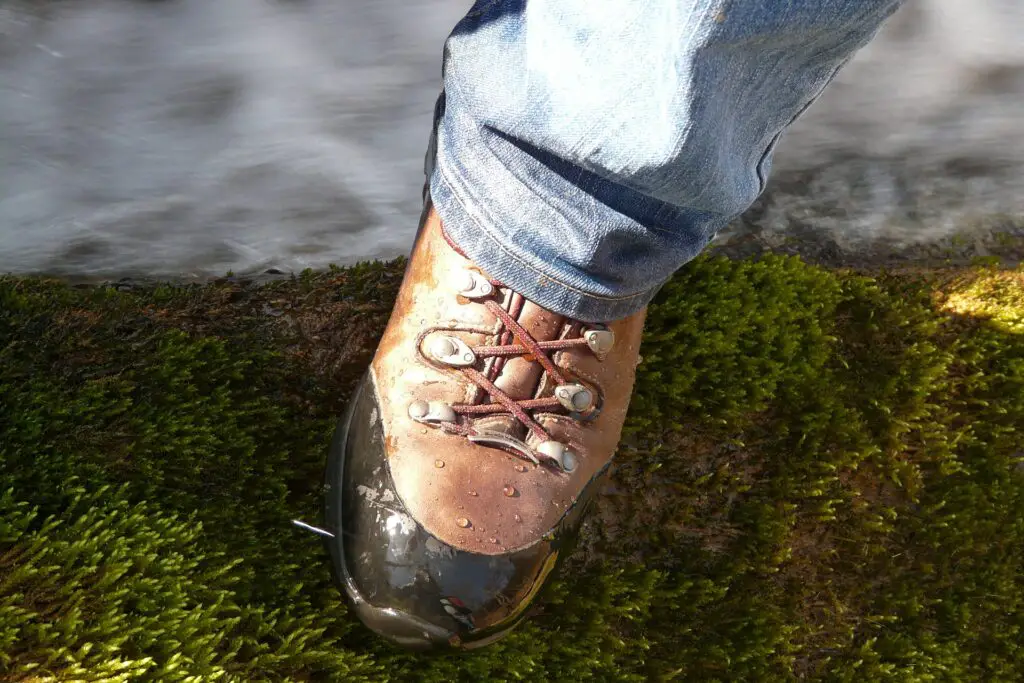
Bad substitutes
You can wax your string with any kind of wax you find around your house, apart from hair styling wax. But you shouldn’t wax your string with anything else. So, no grease or sprays, only wax.
Some people for example think that you could also use Vaseline, Chapstick, or Labello, but these are not great options. These substances all contain petroleum jelly and are very sticky. Therefore, it will attract huge amounts of debris. Before you know it, your string is full of dirt and sand.
It can also be a major pain to get rid of it when you want to properly wax your string. Especially Vaseline and pure petroleum jelly are near impossible to remove due to their stickiness.
Why I would stick with bowstring wax instead
Although I gave you some substitutes for bowstring wax, nothing beats the real stuff. Bowstring wax is purpose-made for bowstrings and will therefore protect your string as no other wax will. It’s also much more convenient because bowstring wax has a low melting point and is packaged to be applied directly to the string.
You shouldn’t consider these substitutes as a cost-saving measure. Most bowstring waxes are less than $10 and one stick will last a lifetime. Bowstring wax doesn’t dry out and stays good for ages.
The only real reason to use anything else is if you can’t find bowstring wax and you need a quick fix for your fuzzy string. In that case, you can consider some of these substitutes, but I wouldn’t use them long term.
What is the best bowstring wax?
I recommend the Bohning Seal-Tite wax. This wax is used by most archers and is quite cheap. Bohning is known as a high-quality archery brand and is therefore trusted by archers around the world.
There are probably alternatives that also perform great. But since it’s a cheap product I don’t see any reason to experiment with wax from less reputable manufacturers.
How to wax a bowstring
How you should wax your string depends largely on what kind of wax you buy. If you are using a wax stick you can use the step-by-step guide below:
Step 1: remove debris and old wax
Before you apply a new layer of wax you must remove the old. This layer is often full of debris and dried out. To remove this wax, run a thin piece of rope along the string. The string will catch the old wax.
Only do 1 or 2 passes and don’t pull too hard on the string. This may cause the fibers to tear.
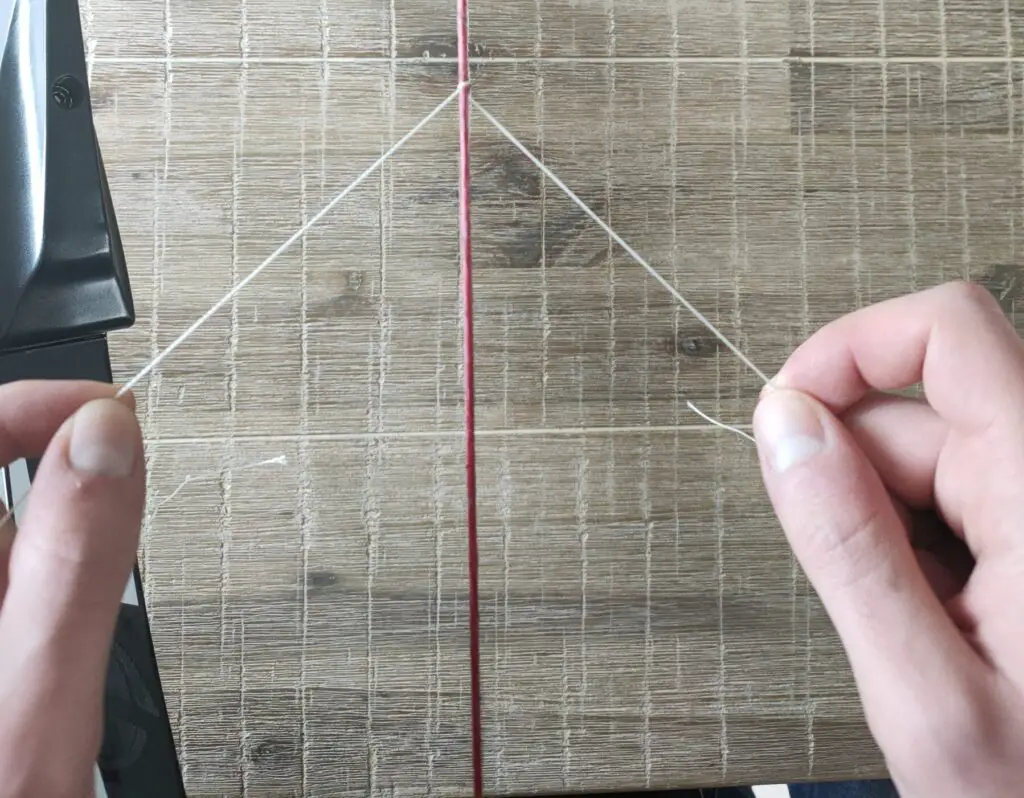

Step 2: get your wax stick ready
Before we can start waxing the string, we need to get some wax out of the tube. To do this, you first roll the wax between your hands, which will loosen up the wax. Next, press in the back of the wax, and with some force, the wax will get out of the sleeve.
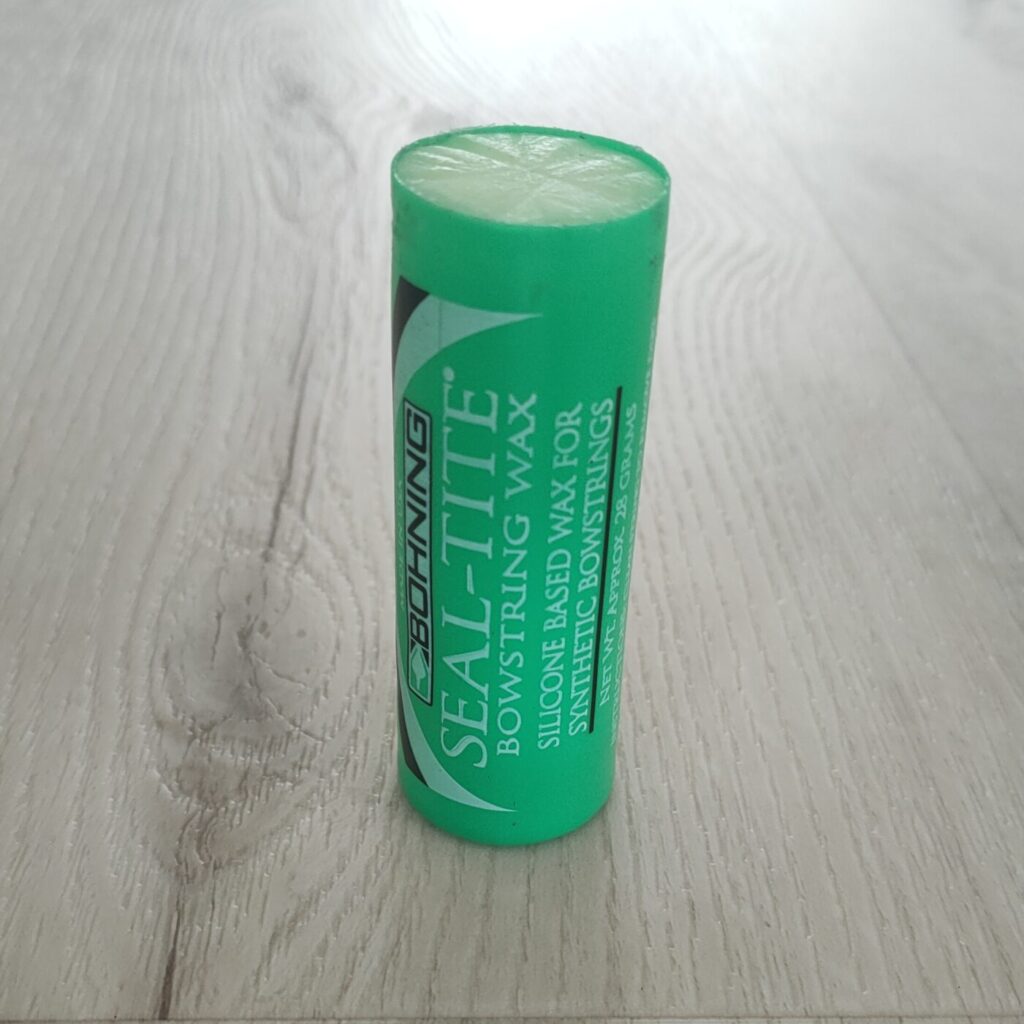
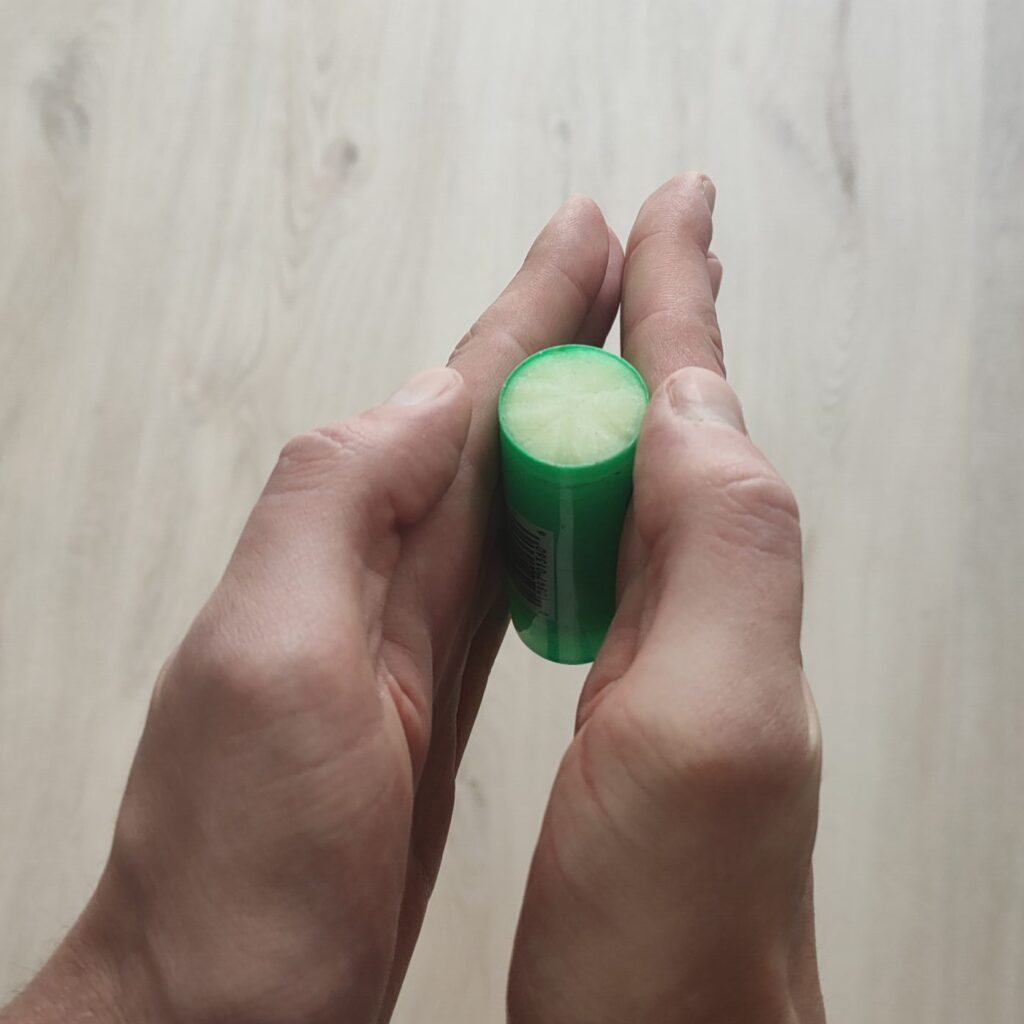
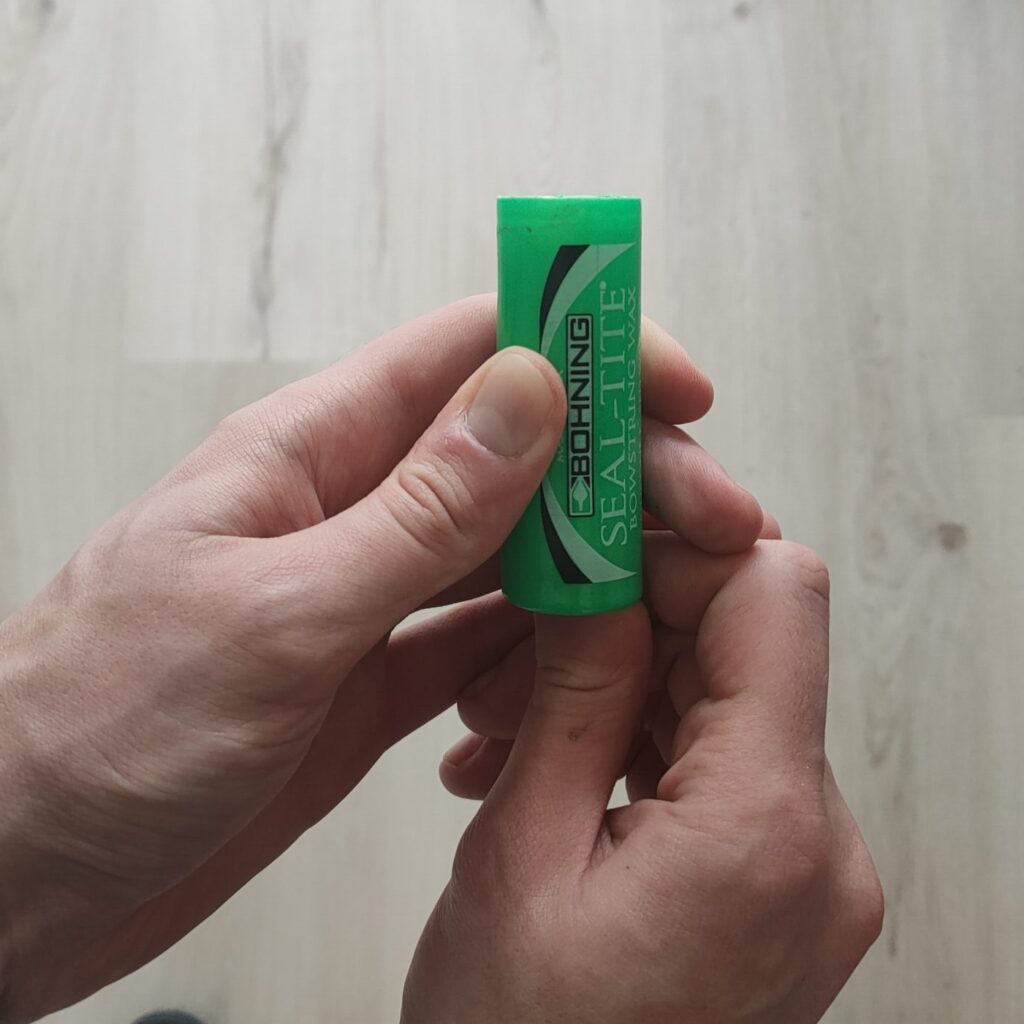
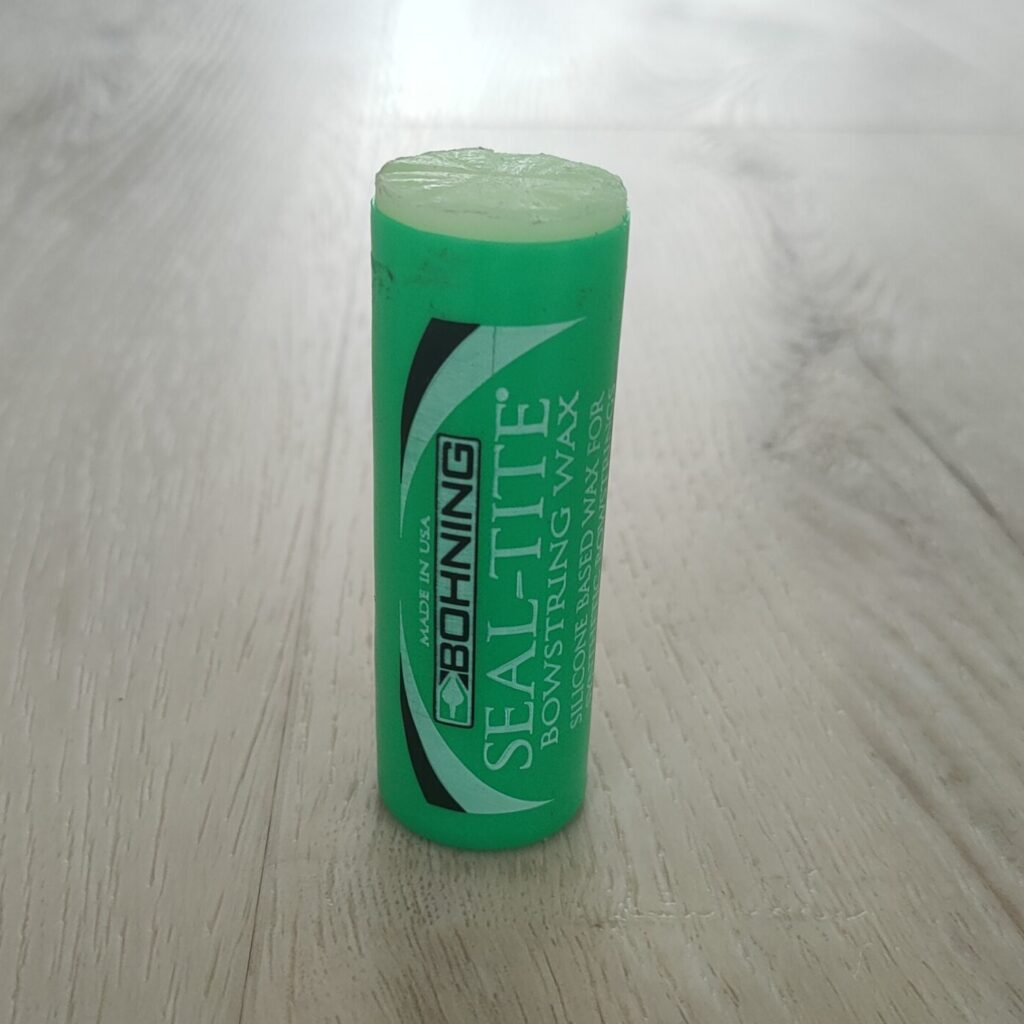
Step 3: apply the wax to the string
Now you simply rub the wax on the string. Only apply a thin layer. If you apply too much it will attract more dirt and start to clump. This in turn will cause the wax to fall off the string while shooting the bow.

Step 4: rub the wax into the string
Once the wax is on the string, you still need to rub it into the fibers. This makes sure that the wax covers the complete string and keeps the fibers together. Simply use rub the wax into the string with your fingers.
You don’t have to do this with a lot of force, it shouldn’t hurt your fingers. Also, don’t use a cloth or a piece of leather. Although it might seem like a good idea, pieces of the cloth or leather will wear off and get caught in the wax.
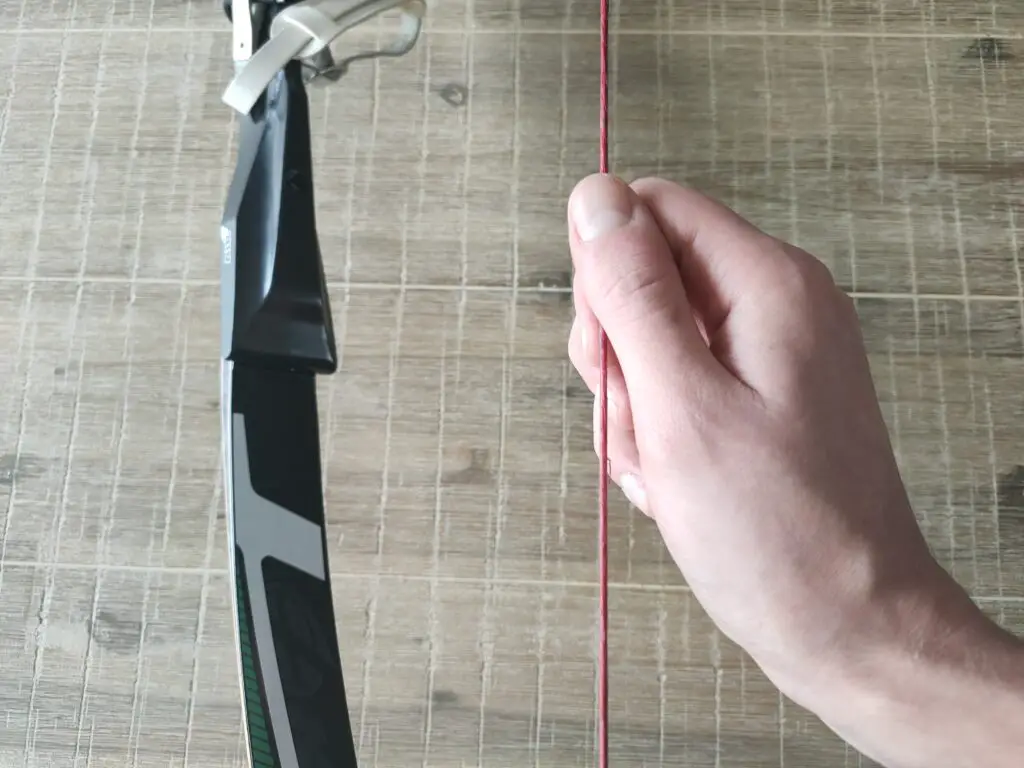
Final words
On archery forums, there are heated debates about waxing. Whether it’s really needed, what you can use as substitutes, and what is the best wax. I would say, just use common sense. If it feels and looks the same as bowstring wax, it’s probably safe to use it on the string.
Read this article, if you want to know more about bowstring care and waxing. I also discuss why you should wax your string and when you should replace it.
If you have any questions, feedback, or experiences you would like to share, please do so in the comment section down below. I would love to hear from you! I will reply to your comment as soon as possible.
Tim van Rooijen
For as long as I can remember, I have always been fascinated by archery. First due to its historic significance but later because I like being outdoors. With this blog, I share my knowledge about Archery and how you can improve your shot. More about author…




Your theory on what ski wax does is entirely wrong, which casts doubt on the quality of the rest of your information. Downhill wax has just enough friction to melt a microscopic thin layer the snow as you slide along, thereby reducing friction. Cross country wax is just soft enough for ice crystals at the right temperature, matched to the wax, to penetrate it, thus increasing grip. When sliding ahead, it melts the snow per above.
Hi Edward, admittedly I don’t have any experience with how skiwax is used on skies and snowboards. This information is from other websites, which seems to be wrong. But the goal of this article was not to explain how to use skiwax for those purposes. There are plenty of articles that describe this well and it is not the focus of my website. The goal is to discuss some substitutes for bowstring wax. In order to make this list, I have compared important attributes of bowstring wax: stickiness, hardness, and ingredients. On this list, I have added multiple waxes which are very similar to bowstring wax in this regard.
As a surfer/skater I can’t help but feel a little uncomfortable about surfboard wax, it’s ultimately meant to be sticky especially when wet, not like skateboard wax which has no other purpose really but as a barrier for temperature/friction. I have surfboard wax on my car in particular places, boardbag, legropes, fins, wetsuit etc it just gets stuck to everything over time and everything sticks to it, like SAND… if you want to degrade your bowstring, use surfboard wax and go to a dry and dusty area.
Hi Luke,
Thank you for sharing your experience. A sister of mine surfs and the wax she used wasn’t that sticky. It was only sticky when you heated it very similar to bowstring wax. Maybe it depends on the brand used?
never used wax on a bow string, some stings I have are 60 years old and still fine.
Hi Joseph,
I believe this is highly dependent on the materials the strings are made of. But I might put this to the test with newer strings.
I only know that the string will get fuzzy when you don’t wax it, but I am not sure whether this will cause the string to break in the long term.
Thank you for sharing your experience!
Cork grease has always worked for me.